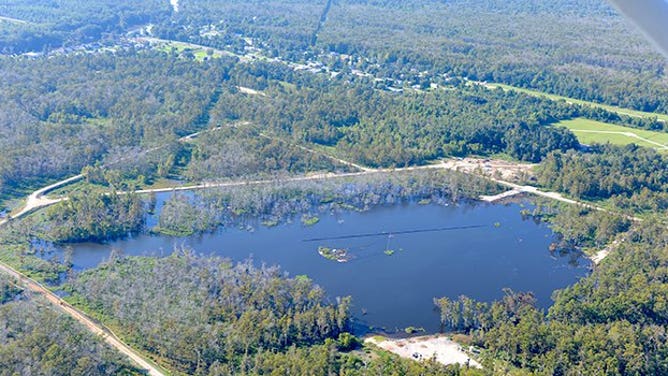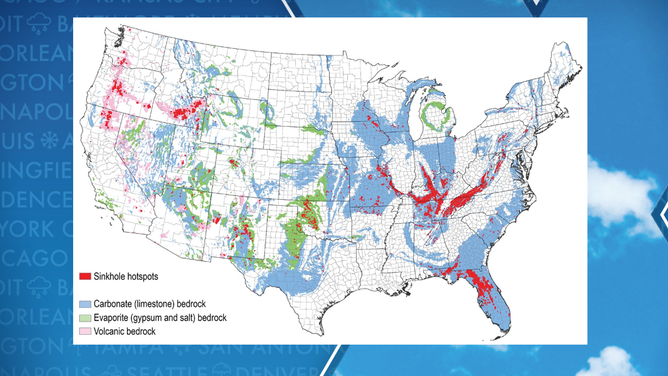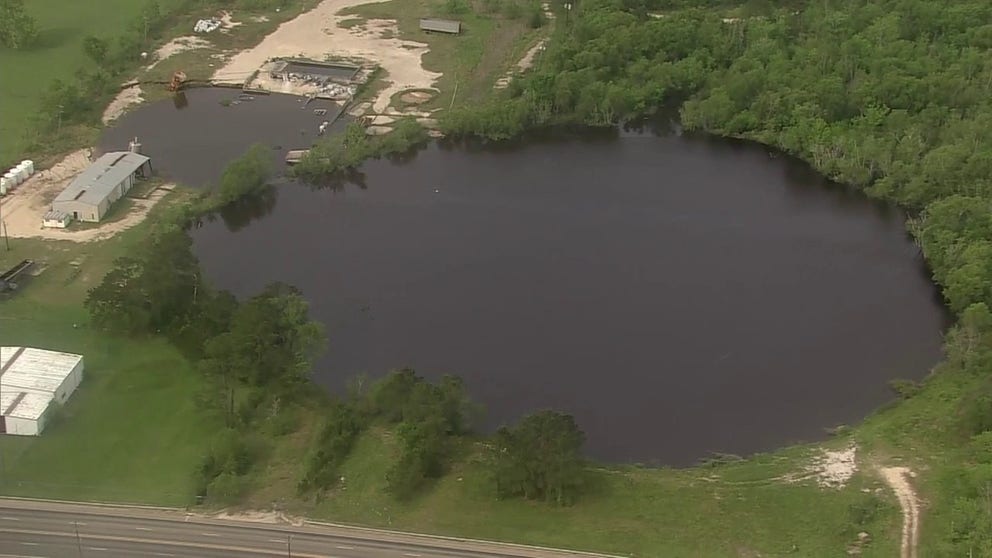Expert believes secondary sinkhole is likely to blame for growing alarm in Texas town
City officials say they are closely monitoring the activity but did not report ordering any evacuation orders. A natural sinkhole can form when water dissolves surface rock below the surface.
Sinkhole expands in Texas
A Texas town is watching what is thought to be a secondary sinkhole that has developed some 15 years after a larger event, east of Houston.
DAISETTA, Texas – A sinkhole that made headlines in 2008 for suddenly appearing in a small Texas town outside of Houston is making news again after experts said what appears to be a secondary hole has developed, swallowing some abandoned equipment.
Officials in Daisetta, Texas, said they were first notified on April 2 about the changes in the terrain and notified residents in the immediate area of the situation.
Aerial video taken by a helicopter showed at least one storage tank and several outpost buildings that were partially submerged in the new depression.
Randall Orndorff, a research geologist at the U.S. Geological Survey, was one of the original team members who studied the first sinkhole and tied the initial event to oil and gas operations that created a void, eventually leading to the collapse.
"The gas and oil industry produces waste as they drill. And they found salt domes are quite good to put waste in. At the Daisetta site, there was a small operation that was injecting fluids into the salt dome, and for whatever reason, we don’t actually know, the salt dissolved and created a void - then it collapsed all of a sudden in 2008," said Orndorff.
The original sinkhole expanded within the first few months and slowed as many events do. The hole was as wide as about three football fields and hundreds of feet deep.
Orndorff, who has seen several videos of the newest developments at the site, believes the latest depression is removed from the heart of the first event, likely adding weight to the theory a secondary sinkhole could have developed.
Why a secondary hole developed some 15 years after the first has experts puzzled but say a constant barrage of rain could have been enough to trigger the new formation.
CALIFORNIA SCENES SHOW DEVASTATION FROM FLOODING, SINKHOLES AMID BARRAGE OF ATMOSPHERIC RIVERS
Local authorities have not issued any evacuation orders for the newest hole, which is more than 100 feet wide.
According to the USGS, sinkholes are possible along the Gulf Coast due to salt formations underground, which can be exasperated by industrial activities.
"It’s fairly stable in the natural environment, but when you start injecting the fluids, you’re going to start causing some problems," said Orndorff.

Aerial sinkhole that formed in Louisiana in 2012
(NASA/On Wings Care / NASA)
The incident is similar in nature to a sinkhole that was discovered in 2012, about an hour’s drive outside New Orleans in Assumption Parish, Louisiana.
Gas and petroleum operations in the rural community are believed to have triggered the Bayou Corne sinkhole incident, which triggered hundreds of evacuations and a hole a couple of dozen acres wide.
Other states where sinkholes are common are Florida, Alabama, Missouri, Kentucky, Tennessee, Virginia and Pennsylvania.

USGS Sinkhole hotspot map
(USGS / FOX Weather)
